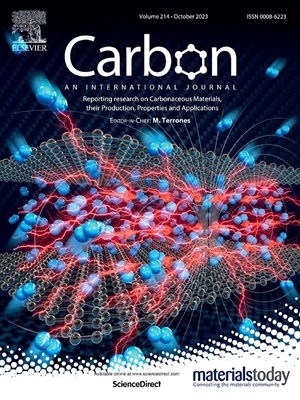Phosphoric acid deconstruction of lignocellulose structure enables an ultra-wide plateau capacity in hard carbon anode
IF 10.5
2区 材料科学
Q1 CHEMISTRY, PHYSICAL
引用次数: 0
Abstract
Biomass-derived hard carbon, thanks to its natural advantages as an anode material for sodium-ion batteries (SIBs), has been receiving growing attention. However, the structure and performance of hard carbon can vary remarkably depending on the precursor materials and carbonization processes used. Thus, how to regulate the structure of biomass materials to achieve superior properties remains an open question. In this study, we propose a design for a porous, biomass-derived hard carbon anode material featuring a broad low-voltage plateau, high capacity, and excellent stability. Walnut shells serve as the biomass precursor, while phosphoric acid acts as both the regulator and dopant. Phosphoric acid promotes the disruption of microfibrillar crystalline regions and etches the tight structures of lignin and hemicellulose, developing more and larger enclosed pore spaces. The material carbonized at 1500 °C demonstrates a high capacity of 422 mAh g−1 and a wide plateau capacity of 322 mAh g−1 at 20 mA g−1, with an initial coulombic efficiency (ICE) reaching 93.99 %. Importantly, the optimized hard carbon displays a higher plateau capacity, achieving an increase of 192 mAh g−1 over directly carbonized hard carbon. This represents nearly double the capacity of the directly carbonized material. This simple and reliable method offers an easy-to-implement route for mass production of high-capacity, biomass-derived hard carbon for use in SIBs.

磷酸分解木质纤维素结构使硬碳阳极具有超宽平台容量
生物质硬碳作为钠离子电池(sib)的负极材料,由于其天然的优势而受到越来越多的关注。然而,硬碳的结构和性能会因前驱体材料和碳化工艺的不同而发生显著变化。因此,如何调节生物质材料的结构以获得优异的性能仍然是一个悬而未决的问题。在这项研究中,我们提出了一种多孔的、生物质衍生的硬碳阳极材料的设计,该材料具有广泛的低压平台、高容量和优异的稳定性。核桃壳作为生物质前体,磷酸作为调节剂和掺杂剂。磷酸促进微纤维晶体区域的破坏,侵蚀木质素和半纤维素的紧密结构,形成更多更大的封闭孔空间。在1500℃下碳化的材料具有422 mAh g−1的高容量,在20 mA g−1时具有322 mAh g−1的宽平台容量,初始库仑效率(ICE)达到93.99%。重要的是,优化后的硬碳显示出更高的平台容量,比直接碳化的硬碳增加了192 mAh g−1。这几乎是直接碳化材料容量的两倍。这种简单可靠的方法为大规模生产用于sib的高容量生物质衍生硬碳提供了一种易于实施的途径。
本文章由计算机程序翻译,如有差异,请以英文原文为准。
求助全文
约1分钟内获得全文
求助全文
来源期刊

Carbon
工程技术-材料科学:综合
CiteScore
20.80
自引率
7.30%
发文量
0
审稿时长
23 days
期刊介绍:
The journal Carbon is an international multidisciplinary forum for communicating scientific advances in the field of carbon materials. It reports new findings related to the formation, structure, properties, behaviors, and technological applications of carbons. Carbons are a broad class of ordered or disordered solid phases composed primarily of elemental carbon, including but not limited to carbon black, carbon fibers and filaments, carbon nanotubes, diamond and diamond-like carbon, fullerenes, glassy carbon, graphite, graphene, graphene-oxide, porous carbons, pyrolytic carbon, and other sp2 and non-sp2 hybridized carbon systems. Carbon is the companion title to the open access journal Carbon Trends. Relevant application areas for carbon materials include biology and medicine, catalysis, electronic, optoelectronic, spintronic, high-frequency, and photonic devices, energy storage and conversion systems, environmental applications and water treatment, smart materials and systems, and structural and thermal applications.
 求助内容:
求助内容: 应助结果提醒方式:
应助结果提醒方式:


